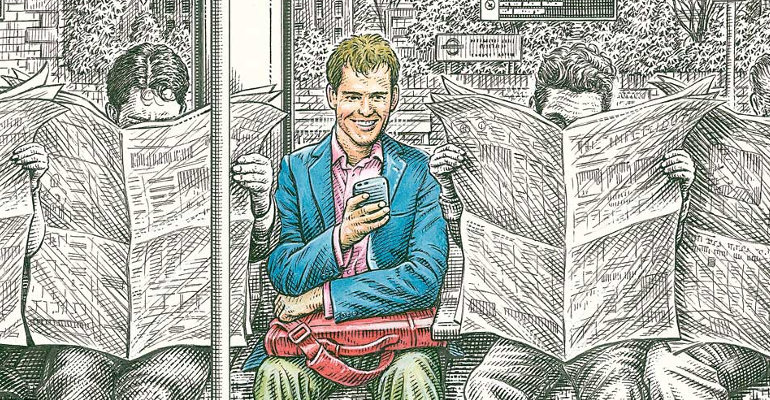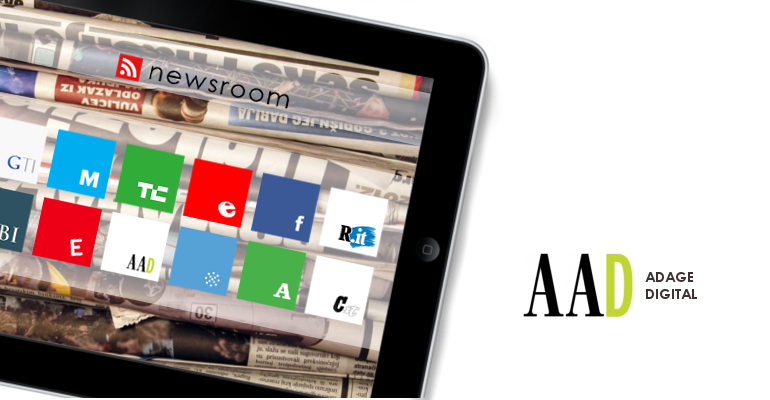The new New York Times online with its native advertising. Newsweek is back in the newsstands after its goodbye to print. Revolution is in the air for 2.0 information
The wait for the new online version of the New York Times is over. New graphics, optimisation for mobiles, tablets and laptops and, above all, the introduction of ‘native advertising’, with editorial content sponsored by the advertisers. As of today, the most important American newspaper is submitted to the judgment of the Web with its new design and it will be interesting to see how the audience and the market will react to this change.
The New York Times revolution that took place at the beginning of 2014 represents the refrain of the future of information in the digital age. Many people consider that the marriage of convenience between online news and advertising establishes the final decline of correct, independent information. others think it is the path (full of uncertainties) that is necessary to grant a future to newspapers and journalism, while for several observers it has assigned social media the task of freeing information from the logics of the market.
The victory of online information and the death of printed newspapers has for long been a stylistic exercise and a great amount of non-fulfilled prophecies have been made. In 2014, this debate will continue with great emphasis because, if on the one hand, the NYT accelerates on the Web by adopting native advertising (a choice that had already been made by WSJ, Forbes, Time and all the major social networks), on the other hand Newsweek is about to go back to the printed version, taking a step back from the momentous decision it had made in October 2012 to leave the newsstands.
The importance of coming second, a talent that was celebrated by the innovator Enrico Fermi, is increasingly becoming a virtue, especially for people living in the Old Continent, who can learn the lessons coming from the States, where the debate is not limited to digital-print, but regards business models and quality of contents. Two topics that should also (greatly) interest the information that is “made in Italy”.
The sale of Italian newspapers collapsed in 2013: La Repubblica lost 51,000 copies, Il Corriere della Sera 40,000, La Stampa 27,000, La Gazzetta dello Sport 42,000, Il Corriere dello Sport 36,000, Il Messaggero 33,000 and so on. Agreeing on the obvious, that is, that printed media are undergoing an irreversible decline due to the online press, is even too simple and does not focus on the problem. According to the ISTAT, in 2013 the access of Italian families to the Internet kept growing (60.7% compared with 55.5% in 2012) and the use of tablets and smartphones has increased to dodge the shortcomings of the broadband. But the digital growth in Italy is mainly caused by those who have stopped reading newspapers since long or have never read them, namely 30-year old people and teenagers. In other words, the precept “more Internet, less newsstands” simplifies a problem that involves not only printed media, but also television and on line press.
Is it still true that “content is the king”? This is the tedious question that the Web’s cannibalistic instinct asks information tout court, be it online, printed or TV. After years of maquillage, little tricks and buffer solutions, in 2013 the major Italian media have started to answer this question on the Web, and the hope is that they will have reservations about the editions in the newsstands without throwing them in the bin. When the website of La Stampa, which lost its domain suffix .it, announced that the editorial staff is no longer divided into online and printed, it started to provide a reply, just like the medialab created by Marco Bardazzi and named by Mario Calabresi. The new version of repubblica.it, which tries to free itself from the tyranny of clicking on the right hand side column (the one with the photo gallery) is another example. And RAI is also making an effort by publishing its new online information portal presenting it with the ambitious slogan: “These news don’t end up on the Web, they are born there”.
New year, new life? Considering the signs in 2013, for 2014 there is hope (at least for what is taking place on the Web). And before hoping that the vexata questio news-advertising will be solved, let’s hope that information will improve, both printed and online. The question “Which newspapers will close down in 2014?” will be answered in due time. But certainly, if content doesn’t become the king once again, they will inevitably close down. And some of the media, both online and in the newsstands, have already shut down without realising it.









